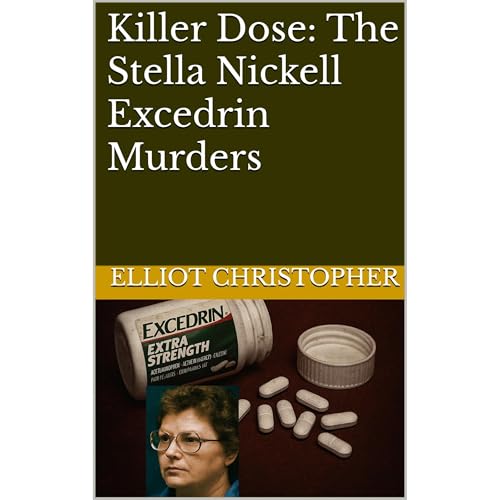
Killer Dose: The Stella Nickell Excedrin Murders
No se pudo agregar al carrito
Add to Cart failed.
Error al Agregar a Lista de Deseos.
Error al eliminar de la lista de deseos.
Error al añadir a tu biblioteca
Error al seguir el podcast
Error al dejar de seguir el podcast
$0.00 por los primeros 30 días
Compra ahora por $9.99
-
Narrado por:
-
Virtual Voice

Este título utiliza narración de voz virtual
In June 1986, Bruce Nickell, a heavy-equipment operator living near Seattle, died suddenly after taking what seemed like an ordinary dose of Excedrin for a headache. His death was initially attributed to natural causes. Less than a week later, another local resident, 40-year-old bank employee Sue Snow, collapsed after swallowing two Excedrin capsules during her morning routine. Toxicology revealed cyanide. Panic erupted, recalling the infamous Tylenol murders of 1982. Supermarket shelves were cleared, nationwide recalls announced, and consumers everywhere looked at medicine bottles with fear.
Investigators soon realized Bruce’s death was not natural but linked to the same poison. The terrifying theory of a random killer scattering poisoned bottles seemed at first plausible — until suspicion began circling closer to Bruce’s widow, Stella Nickell.
The evidence trail was chilling. Forensic testing of capsules revealed cyanide laced with microscopic green flecks traced to an aquarium algaecide found in the Nickell home. Stella’s fingerprints appeared on pages of library books about poisons and product tampering, checked out months before Bruce’s death. Her daughter, Cindy Hamilton, reluctantly testified that Stella had spoken about cyanide and complained bitterly about money problems. Most damning of all, investigators uncovered multiple life insurance policies on Bruce, each with double-indemnity clauses for accidental death — policies Stella had quietly arranged.
In December 1987, Stella was indicted under the Federal Anti-Tampering Act of 1983, legislation born from the Tylenol murders but never before tested in court. At trial in 1988, prosecutors built a mosaic of circumstantial evidence: the insurance motive, the scientific links to her household products, the fingerprints on poison manuals, the testimony of her daughter. The defense countered that no one had seen her tamper with bottles, that the evidence was circumstantial, and that she was being made into a scapegoat.
The jury convicted Stella Nickell on all counts. Judge Barbara Rothstein sentenced her to 90 years in federal prison, a sentence meant both as punishment and as a deterrent. Stella never admitted guilt. From FCI Dublin in California, she spent decades filing appeals, writing letters, and insisting she was framed — even as she aged into frailty behind bars.
The families of Bruce Nickell and Sue Snow were forever changed. Bruce’s relatives grappled with betrayal — that his own wife had killed him. Sue’s family mourned the randomness of her death, a stranger caught in Stella’s scheme to disguise murder as a copycat of the Tylenol case. Cindy Hamilton carried the lifelong burden of testifying against her mother.
The case left lasting marks beyond personal tragedy. It validated the Anti-Tampering Act as a powerful federal tool, spurred the widespread adoption of tamper-evident seals and blister packaging, and reshaped how Americans thought about consumer safety. Forensic advances pioneered during the investigation — chemical fingerprinting, lot tracing, even library records — became models for future cases.
Stella Nickell’s crime began with financial greed, but its consequences extended far beyond her household. It altered families, communities, industries, and laws. To this day, the “Excedrin Widow” remains a haunting reminder of how something as ordinary as a pain reliever can be transformed into an instrument of death — and how vigilance, law, and science rose to meet the challenge.


